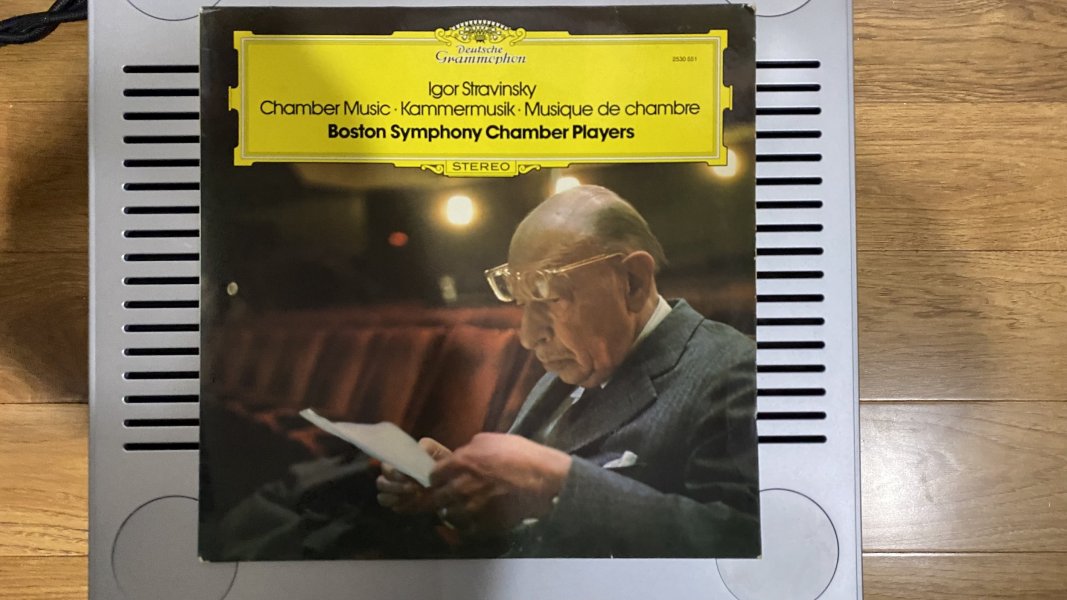I had the great pleasure of spending most of a day with Ian yesterday, listening to his system and helping him set up a new piece of gear. I will let him break that news. After our work was done, we listened to the same music again, and we both heard a significant difference, and I think a nice improvement.
Ian's system is really sounding good these days with a much fuller and evenly balanced midrange to lower frequency range. There was wonderful weight and rich tone to stand up bass, lower horns, and large scale choral music. The music had a real foundation which made it sound more natural that the last few times I had visited. As Ian often does, he introduced me to some new music. This time it was to a delightful piece by Stravinsky. See photo below. The woodwinds and horns sounded simply beautiful and I marveled at their individual sounds and the overall gestalt. Given the reason for the visit, we did a bunch of critical listening, but this music was so good, I tended to get lost in the performance and had to keep reminding myself to listen for differences.
I have not heard such rich, deep tone and bass quality with such body and weight in his system before. It really was a joy. We later compared two IC cables which presented two starkly different takes on the same music. Timbre, color, body, weight were about the same, but the presentation was very different. The first presented the instruments in the Stravinsky piece as very separate, distinct, sounds, each with a kind of black space/halo around it. Imaging of each instrument was pinpoint in relation to the rest on the stage, and outlines were precise. The sounds came from specific locations in the room and remained distinct. The second cable presented the sounds of the various instruments from fairly clear positions on stage. There was laying and localization, but the sounds filled the space and overlapped with the other sounds. Eventually they blended and reflected around the hall in which they were recorded. The sound flowed outward and expanded toward the listener to a much greater degree. The imaging was not as precise, and there was no black background or space around the individual instruments. One presentation was full of life and energy. It was organic. The other seemed impressive but somewhat flat, almost like a painting.
I can see how each presentation can be preferred for what they were, but the difference in these two presentations was remarkable to me. Unfortunately, I did not hear these two cables before we made the gear/set up change, so I do not know if it would have been as pronounced a difference. Time will tell which presentation Ian will prefer.
It is always fun to visit Ian. He is a great host, always in a good mood, and he always has some interesting music to share. Sometimes, as was the case yesterday, we made some changes and did a comparison. I never really know what to expect when I invite myself over for an afternoon, but I always look forward to the visit. This time I learned some interesting stuff, and found another LP to order. Many thanks, Ian. I had a wonderful afternoon as usual.



